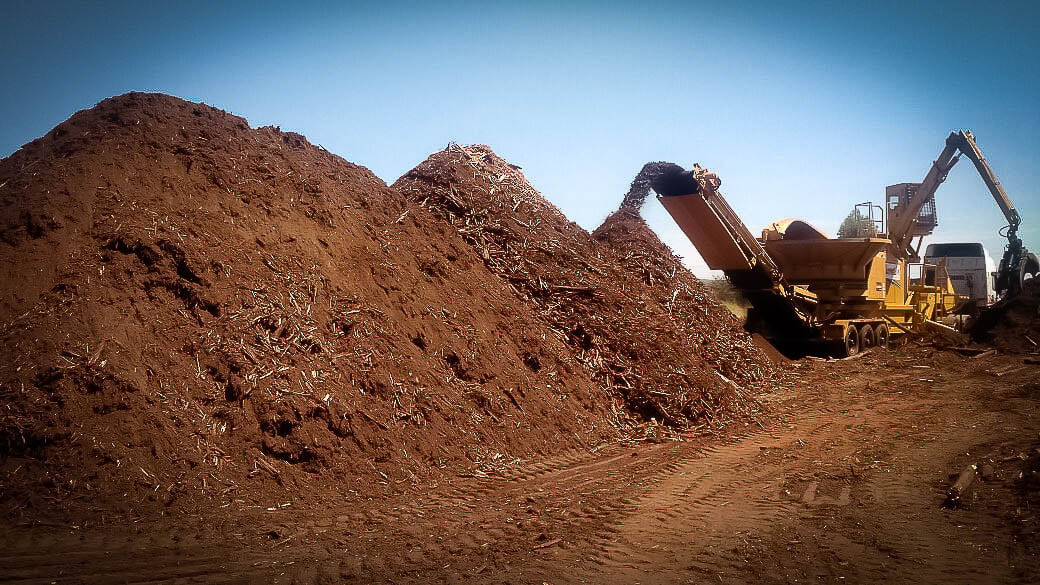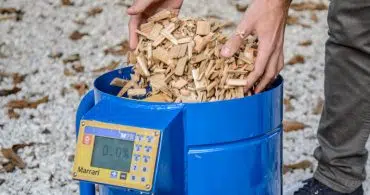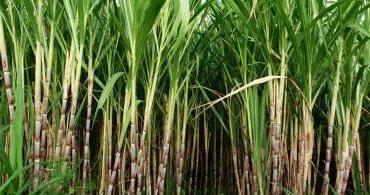Do you know how to make savings with your biomass?
A few years ago, residues from agribusiness and forest-based industries were considered no more than environmental liabilities. The storage of this type of biomass was a source of concern and it was paid to use it for burning or composting. In other words, biomass had a negative market value. Currently, the material carries environmental solutions – for being renewable – and economical.
Biomass easily fits into the much talked about circular economy: as a liability for some, a product for others. It is this sustainable dynamic that makes biomass so valuable in various industrial environments and requires extremely conscientious and profitable management from those who use it. Considering the comments above, the question is: how to save biomass? Certainly the quality control of biomass is the first answer.
Humidity is directly related to the useful calorific value of biomass (PCU). Knowing how wet the material is or what its PCU is implies knowing how much water needs to evaporate before the material starts to provide thermal energy. Knowing the biomass PCU is one of the requirements to charge for the supply of the material, to charge quality from suppliers and to quantify energy stored in the yard.
The humidity on the small screen of a meter, therefore, is decisive in all industrial processes that will take place after the discharge of biomass in the yard.
The information will be used to:
a) qualify, charge and adjust prices with suppliers;
b) classify materials in the yard (which portions will be used for the boiler first?);
c) decide configurations and make decisions about the operation of the boiler itself;
e) to forecast quantities of biomass provided by the purchasing and
f) the most important: know the amount of steam – or amount of thermal energy – obtained from that determined amount of biomass.
That is why the M75 is accompanied by a calculator that suggests rewards or discounts in the value of the ton of material sold. The photo below shows an example of the calculator to correct the biomass value. In this situation, a load was contracted with 40 tons of eucalyptus chips (PSC of 4525 kcal / kg) at 40% humidity (STANDARD) and 40 tons of chips at 50% (REAL) were delivered.
The contracted situation (STANDARD) would imply 24 tons of dry material, which would generate 91.224 Gcalories when burned and only 16 tons of water “disturbing” the combustion.
The REAL situation implies only 20 tons of dry material, generating only 72,020 Gcalories. This difference is not just 10 units (from 40 to 50% humidity). The difference is 91 to 72 calories, or 21.05% less than calories acquired. This is the value suggested for the discount in the price of the ton – which, from R $ 100.00 (agreed to 40%) would become R $ 78.95 (corrected to 50% humidity according to the energy metric).
The financial loss due to lack of control or appropriate metrics in the purchase of biomass can be significant; reaching thousands of reais/dolars. In an industry with a monthly consumption of 3000 tonnes – assuming that any of these controls were absent in a commercialization like the one exemplified above and that the delivery of the trucks was repeated with 50% humidity instead of the 40% agreed – the monthly loss would be R$ 63,145.43.
In the same way that the correction can be applied to apply discounts, it is possible to apply bonus corrections in cases where the biomass is drier than agreed; which contributes to the organization and qualification of suppliers. Obviously the metric for the application of discounts and bonuses is a criterion to be established and agreed between suppliers and consumers; but in general it is important that it is always based on quantities of energy and not quantities of material. Only in this way is it possible to save the precious source of energy that has been shown to be biomass.
Author:
Elisa Pizzaia Goltz
Industrial Wood Engineer (UFPR, 2014)
Master in Forestry Engineering (UFPR, 2018)
Quality / technical manager of the Umilab laboratory at Marrari Automação





